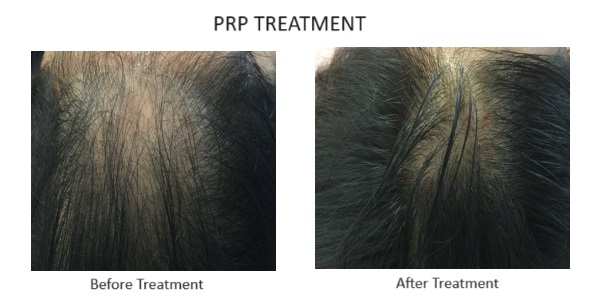PLATELET RICH PLASMA (PRP) TREATMENT FOR HAIR LOSS
What is Platelet rich plasma treatment (PRP)?
Here at MKSkin Clinic in Milton Keynes, we offer Platelet Rich Plasma (PRP) treatment for hair loss. Platelet Rich Plasma (PRP) is a treatment that uses the component of a person’s own blood (Platelets) to stimulate hair growth. Platelet rich plasma is injected into the scalp, this results in the release of various growth factors that stimulate the hair follicles, resulting in thicker, healthier hair for both men and women.
Research studies have shown an increase in the hair density and hair thickness after PRP injections for androgenetic alopecia (The most common cause for hair loss). PRP can stop or reduce hair miniaturization caused by androgenetic alopecia, by stimulating the dormant follicular cells in the scalp.
PRP works best for people who have noticed hair thinning in the last 1-3 years and for best results 3 to 4 treatments, 4 weeks apart are recommended. Once you have achieved the desired results, maintenance treatments, one session every 4 months can be given. Here at MKSkin clinic, Milton Keynes, PRP treatments are carried out by qualified and experienced doctors. Patient safety and effective treatments, remain our priority.
More info
A small quantity of blood is drawn from the patient into a syringe. The blood is spun in a special centrifuge to separate its components (Red Blood Cells, Platelets and Plasma). The platelet rich plasma is separated from the rest of the blood. Here at MKSkin clinic, Milton Keynes, we use local anaesthesia to numb the areas to be treated for patient comfort, PRP is then injected directly into thinning areas of the scalp.
- Androgenetic hair loss (male and female pattern alopecia)
- Age ≥ 21 years
- Acute and chronic infections
- Certain skin diseases (i.e. SLE, Porphyria)
- Cancer
- Chemotherapy
- Blood or bleeding disorders, Anti‐coagulation therapy
- Chronic liver disease.
- Systemic use of corticosteroids within two weeks of the procedure.
- Chronic infectious blood borne disease, such as HIV / AIDS or hepatitis.
- Mild bleeding (pin-point, at the injection site)
- Mild swelling (settles within a few hours)

